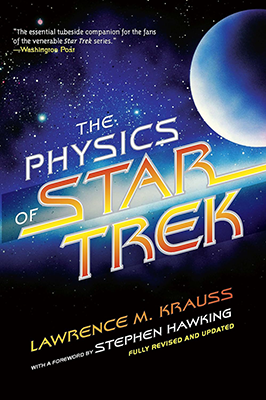The Physics of Star Trek
“The Physics of Star Trek” by Lawrence M. Krauss is a fascinating exploration of the scientific concepts behind the fictional universe of Star Trek. Here’s a summary:
Introduction to Star Trek: Krauss begins by introducing the world of Star Trek, a popular science fiction franchise that has captured the imagination of millions of fans worldwide. He discusses the iconic starships, futuristic technology, and imaginative storytelling that define the Star Trek universe.
Warp Drive and Faster-than-Light Travel: Krauss delves into the physics of warp drive, the propulsion system that allows starships in Star Trek to travel faster than the speed of light. He discusses the theoretical basis for warp drive, including concepts from general relativity such as space-time warping and the Alcubierre drive.
Transporters and Teleportation: Krauss explores the science behind transporters, devices used in Star Trek to instantaneously transport people and objects from one location to another. He discusses quantum teleportation, Heisenberg’s uncertainty principle, and the challenges of recreating a person’s atomic structure.
Time Travel: Krauss discusses the concept of time travel in Star Trek and its theoretical underpinnings in physics. He explores the possibility of closed timelike curves, wormholes, and other speculative phenomena that could potentially allow for time travel, as depicted in various Star Trek episodes and films.
Artificial Intelligence and Robotics: Krauss examines the portrayal of artificial intelligence and robotics in Star Trek, including the character of Data, an android with human-like sentience. He discusses the challenges and ethical implications of creating intelligent machines, as well as the potential benefits and risks.
Aliens and Exobiology: Krauss discusses the scientific basis for the diverse array of alien species encountered in Star Trek. He explores concepts from astrobiology, evolutionary biology, and planetary science to speculate about the possibility of extraterrestrial life in the real universe.
Energy and Power Sources: Krauss explores the energy sources and power systems used in Star Trek, such as antimatter reactors and dilithium crystals. He discusses the scientific feasibility of these technologies and their parallels to real-world efforts to develop advanced propulsion and energy systems.
The Multiverse and Parallel Universes: Krauss discusses the concept of the multiverse and parallel universes as depicted in Star Trek. He explores theories from quantum mechanics and cosmology that suggest the existence of alternate realities and parallel timelines.
Conclusion: Krauss concludes by reflecting on the enduring appeal of Star Trek and its ability to inspire curiosity about science and exploration. He emphasizes the importance of scientific literacy and critical thinking in separating fact from fiction in the realm of science fiction.
Overall, “The Physics of Star Trek” provides a captivating exploration of the scientific ideas and concepts embedded in the beloved science fiction franchise, offering readers a deeper understanding of the real physics behind the fantastical world of Star Trek.

